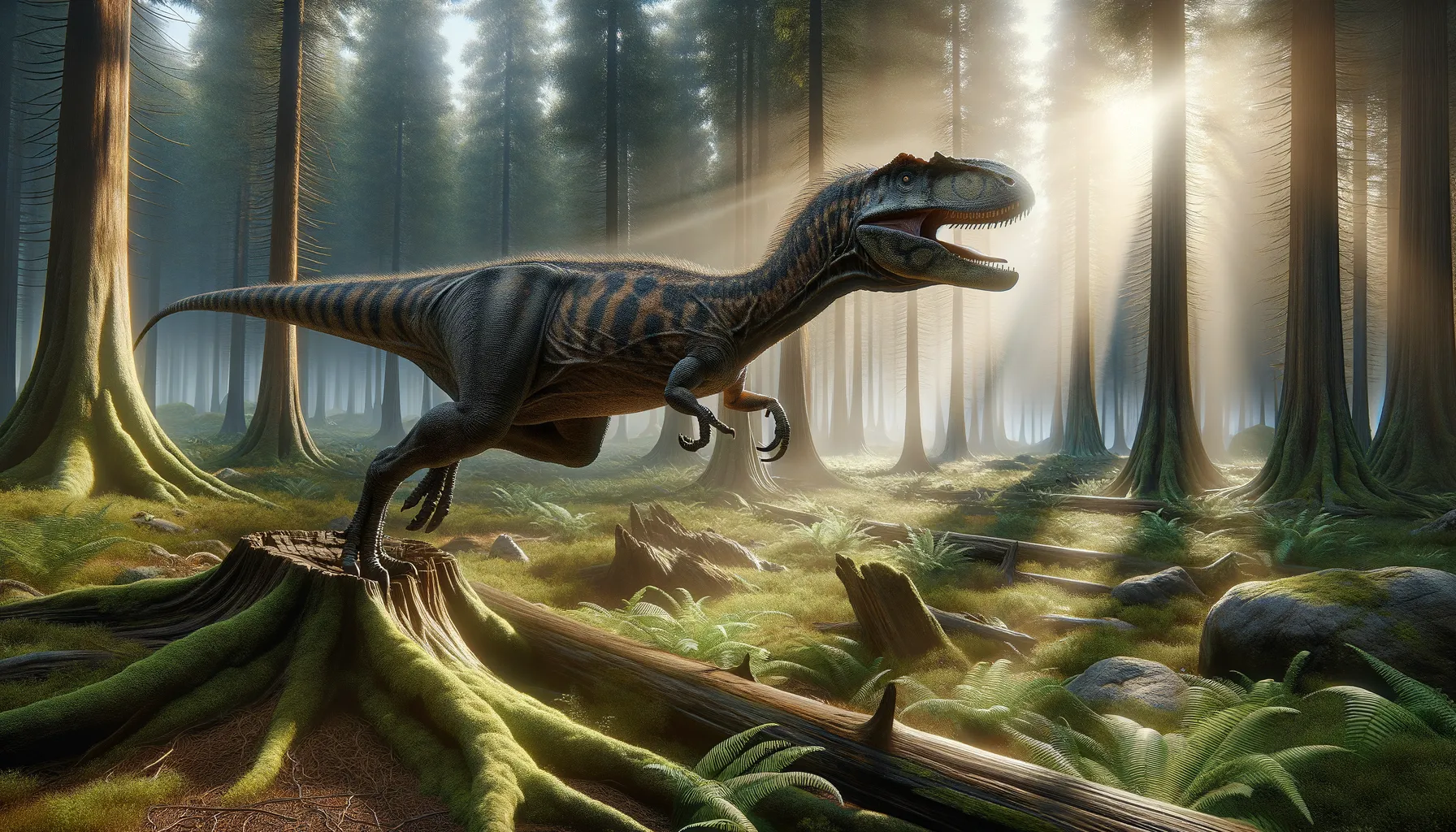
Procompsognathus
Swift hunter of the Triassic trails.
Period
Triassic
Length
Roughly 1 meter (3.3 ft) in length.
Height
About 30 cm (1 ft) tall.
Weight
Approximately 1 kg (2.2 lbs).
Procompsognathus was a nimble theropod dinosaur that lived during the Late Triassic period. With a light body, it was built for speed and agility, ideal for escaping predators and chasing down prey. Its categorization as a primitive theropod provides valuable insights into the early evolution of dinosaurs. Although small, it played a significant role in its ecosystem, providing a glimpse into the complex web of life that existed over 200 million years ago.
Diet
Procompsognathus was primarily carnivorous, feeding on small animals and insects. Its diet likely included lizards, amphibians, and insects, which it could catch using its speed and agility.
Hunting
This dinosaur was likely a solitary hunter, relying on its quick movements to surprise and capture prey. Its sharp teeth and agile body made it well-suited for catching fast-moving creatures in its environment.
Environmental challenges
Living in the Late Triassic meant Procompsognathus had to navigate a dynamic and changing environment. It faced competition from other small theropods and carnivores. Predators larger than Procompsognathus itself posed constant threats, necessitating a need for quick escapes and hiding abilities. The fluctuating climates of the Triassic could have forced adaptability in hunting and survival strategies.
Speed
Known for being swift, it could run at moderate speeds.
Lifespan
Estimated around 10 to 15 years.
First discovery
Discovered in Germany in 1913.
Fun Facts
- Procompsognathus lived during the Late Triassic period, approximately 210 million years ago.
- This dinosaur's name means 'before elegant jaw' and refers to its lightweight and agile skull structure.
- Procompsognathus was a small dinosaur, roughly the size of a chicken, measuring about 1 meter in length.
- It was a bipedal carnivore, meaning it walked on two legs and primarily ate small animals and insects.
- Fossils of Procompsognathus have been discovered in what is now Germany, providing valuable insight into early dinosaur evolution.
- The creature's lightweight body and long legs suggest it was a fast runner, likely able to dash after prey with ease.
- Procompsognathus is often noted for its similarity to modern birds, showcasing an evolution trend toward avian-like features.
Growth and Development
Young Procompsognathus would have been reliant on speed and small size for survival, growing rapidly after birth. The growth likely involved quick development of their limbs and agility to facilitate early hunting. Their development stages can provide insights into the growth patterns of theropod dinosaurs in general, showcasing an evolutionary drive towards optimizing hunting capabilities.
Habitat
Thriving in what is now continental Europe, Procompsognathus inhabited lush floodplains and forested areas. The environment was largely dominated by vast coniferous forests and open areas which provided ample prey and cover. It benefited from a range of microhabitats that supported its lifestyle as both a hunter and occasional scavenger.
Interaction with other species
Procompsognathus shared its environment with several contemporaneous dinosaur species, potentially competing for similar prey. This competition could have influenced its evolutionary adaptations towards speed and stealth. Interaction with larger predators meant it often had to escape predation, shaping its cautious and elusive behavior.
Natural lifespan
In ideal conditions, it could live up to 15 years in the wild.
Reproduction
Reproduction likely involved laying eggs, as with most dinosaurs. Nests were probably built in concealed locations to protect from predators. Little is known about parental care, but it might not have been extensive, requiring young to fend for themselves relatively early.
Social behaviour
Procompsognathus is thought to have been a solitary creature, focusing on individual survival and hunting. Social interactions were likely limited, but potential gatherings could have occurred during breeding or in resource-rich areas. Its solitary nature suggests sophistication in individual survival strategies, including hunting and evasion.
Fossil locations
Fossils of Procompsognathus have been primarily found in Germany, offering a glimpse into its historical range. These fossils help paleontologists understand its ecological role during the Triassic. The discovery sites lay within what would have been a lush, dynamic landscape during its time.
